Author: Malcolm Frazer
Hops in the experimental phase of development are often ascribed a moniker consisting of an acronym and number, which isn’t terribly exciting. For example, a couple hops we’ve all come to adore, Citra and Mosaic, were originally referred to as YCR 394 and HBC 369, respectively. While perusing the experimental options offered by Yakima Valley Hops, I came across a variety that didn’t match the typical naming convention, but rather seemed to allude to a person who was perhaps in some way involved, a dude who many have come view as a reliable source for hoppy beer brewing information. As curious as ever, particularly given the lacking data about the variety, I decided Vinnie Special Experimental would be perfect to put through The Hop Chronicles!

Alpha: 12%
Beta: 4.8%
Cohumulone: unknown
Total Oil: unknown vol/wt
Myrcene:unknown
Humulene:unknown
Caryophyllene:unknown
Farnesene:unknown
Linalool:unknown
Parentage: unknown
YVH states this hop imparts “fruity, mangosteen, citrus like a Clementine, pine, coriander” aromas. Besides that, all I could find was feedback from folks who have tasted beers made with Vinnie Special, in particular a version of No Nelson Left Behind by Cellarmaker Brewing Company. In an attempt to glean more details, we reached out to Yakima Valley Hops owner, Jeff Perkins, who said he knew very little about the hop and suggested we contact the farmer directly. Unfortunately, likely due to the short timeframe, we never heard back from the farmer, leaving us with essentially no analytical data to share about this variety. I guess we’ll just have to see for ourselves!
| MAKING THE BEER |
The brew day for this simple 5 gallon batch went off with a hitch and started with me mashing in on our THC Pale Ale recipe, which we’ll soon be retiring for a more boring single malt grist in hopes to focus more on the hops.
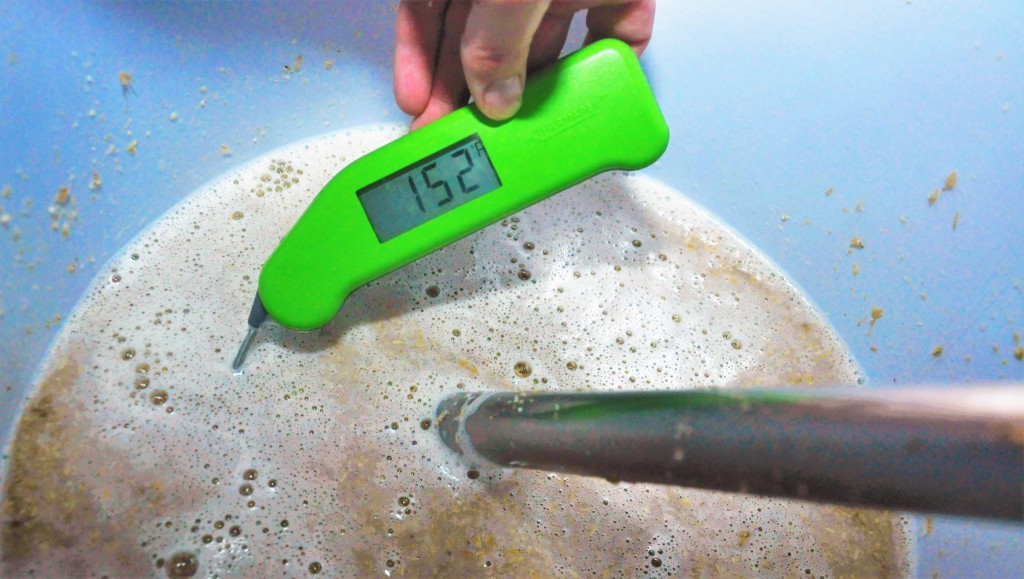
As the mash was finishing up and I was measuring out the hop additions, my professional sniffer came along to have a whiff. She approved.
After a 1 hour saccharification rest, I collected the wort in my kettle, brought it to a boil, and began adding the whole cone Vinnie Special hops.
With the boil complete, I chilled the wort to about 165˚F/74˚C before tossing in the hopstand charge and letting them steep for 20 minutes.
The wort was then chilled to 66˚F/19˚C, transferred to a carboy, placed in my temp controlled fermentation chamber, and the yeast was pitched. Fermentation happened and dry hops were added.
About 2 weeks later, after crashing and fining with gelatin, the beer was kegged.
Within a few days on CO2, it was carbonated and ready for serving.
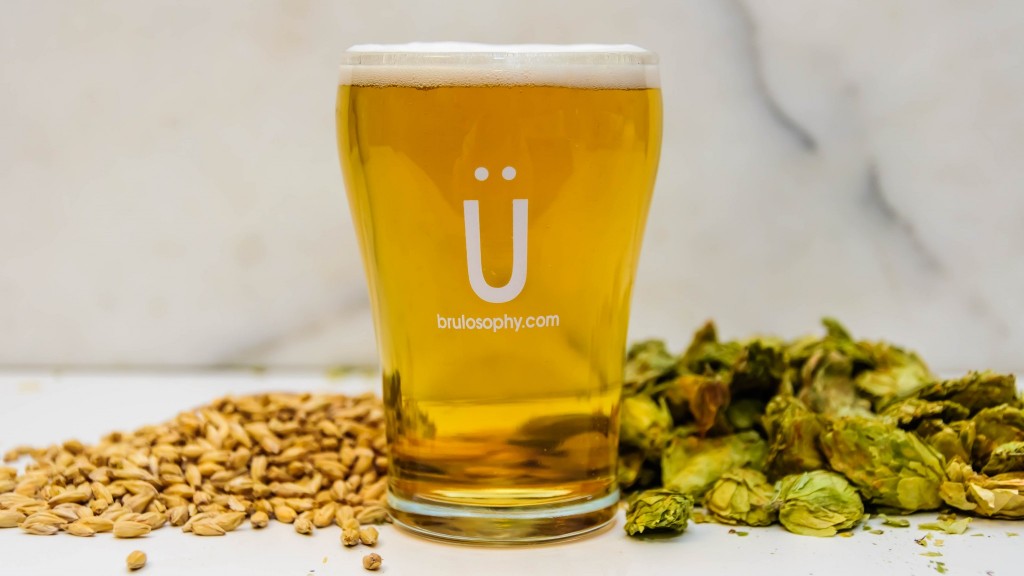
| METHOD |
Participants were instructed to focus only on the aromatic qualities of the beer before moving on to evaluation the flavor. For each aroma and flavor descriptor, tasters were first asked whether or not they perceived the characteristic with “yes” selections taking them to a page instructing them to write-in the perceived strength of that particular characteristic on a 1-9 scale (weak to strong); endorsing “no” resulted in the taster skipping over the rating of that descriptor directly to the next descriptor. Once the data was collected, the average rating of each aroma and flavor descriptor was compiled with all “no” responses being assigned a score of zero.
| RESULTS |
Twenty-three people participated in the evaluation of this beer, all blind to the hop variety used. The average ratings for each descriptor were plotted on a radar graph.
Average Ratings of Aroma and Flavor Perceptions
The 3 characteristics endorsed as being most prominent by participants:
| Aroma | Flavor |
| Citrus | Tropical Fruit |
| Tropical Fruit | Citrus |
| Stone Fruit | Stone Fruit |
The 3 characteristics endorsed as being least prominent by participants:
| Aroma | Flavor |
| Dank/Catty | Onion/Garlic |
| Onion/Garlic | Dank/Catty |
| Pine | Pine |
When asked to rate the pungency/strength of the hop, a rather large majority endorsed it as being moderately pungent or mild.
Tasters were then instructed to identify beer styles they thought the hop would work well in.
Finally, participants were asked to rate how much they enjoyed the hop character on a 1 to 9 scale.
My Impressions: As usual, I sampled this beer one or 6 times prior to data collection to guard against being influenced. When I first opened the bag of whole cone hops, I was hit with sweet orange and the suggestion of resinous pine. There was an element of a subtle soap-like floral scent that wasn’t unpleasant and certainly added nuance. In the finished beer, I was taken aback by the relative muted pine in both aroma and flavor as compared to the freshly opened bag. The first waft gave me a high amount of clementine and candied orange zest trailed by a medium-low hint of lavender. The flavor mirrored the aroma except I experienced the lavender as being even lower, barely showing up as the beer finished. The bitterness is soft and pleasant, which left me wondering if I either under-compensated the predicted IBU for the use of whole cones hops or if this is just an incredibly smooth hop. In my opinion, Vinnie Special is not as intense as I would prefer, the aroma isn’t very loud and heavily balanced toward the sweet orange. Because of the smooth bitterness, I would consider pairing this hop with later additions of spicy or floral hops. I think Vinnie Special could be used early in the boil to boost the IBU then paired with complimentary hops later in the boil for desired effect. Personally, I’d be inclined to use this hop for styles like Saison, Witbier, and if used judiciously, it’d likely add a fun twist to a Belgian Pale Ale. Given the strong citrus element, Vinnie Special would likely be a palate pleaser as a component of an APA or IPA.
| CONCLUSION |
Overall, the Vinnie Special Experimental hop seemed to be moderately well received among those who sampled this single hop American Pale Ale, with most noting descriptors similar to what we’ve seen in prior issues of The Hop Chronicles, characteristics typically associated with modern IPA-type hops. However, the fact so many perceived the pungency of Vinnie Special as mild to moderate suggests it might not have the punch-you-in-the-teeth qualities many seek and may be better suited for less aggressive styles. With tasters noting citrus and tropical fruit as the most prominent aromas, which my own personal experience supports, I’d some some credence is lended to the description offered by Yakima Valley Hops. For those looking for a unique and pleasing new hop variety to try out, I definitely recommend giving Vinnie Special some consideration.
If you’ve used Vinnie Special Experimental, tasted a beer made with it, or have any insider information, please share in the comments section below!
Support for The Hop Chronicles came from Yakima Valley Hops, suppliers of over 40 varieties of hops ranging from classics like Saaz and Cascade to yet-to-be-named experimental options. Offering great prices with reasonable shipping, consider Yakima Valley Hops for your next hop purchase.
Support Brülosophy In Style!
All designs are available in various colors and sizes on Amazon!
Follow Brülosophy on:
FACEBOOK | TWITTER | INSTAGRAM
| Read More |
18 Ideas to Help Simplify Your Brew Day
7 Considerations for Making Better Homebrew
List of completed exBEERiments
How-to: Harvest yeast from starters
How-to: Make a lager in less than a month
| Good Deals |
Brand New 5 gallon ball lock kegs discounted to $75 at Adventures in Homebrewing
ThermoWorks Super-Fast Pocket Thermometer On Sale for $19 – $10 discount
Sale and Clearance Items at MoreBeer.com
If you enjoy this stuff and feel compelled to support Brulosophy.com, please check out the Support Us page for details on how you can very easily do so. Thanks!

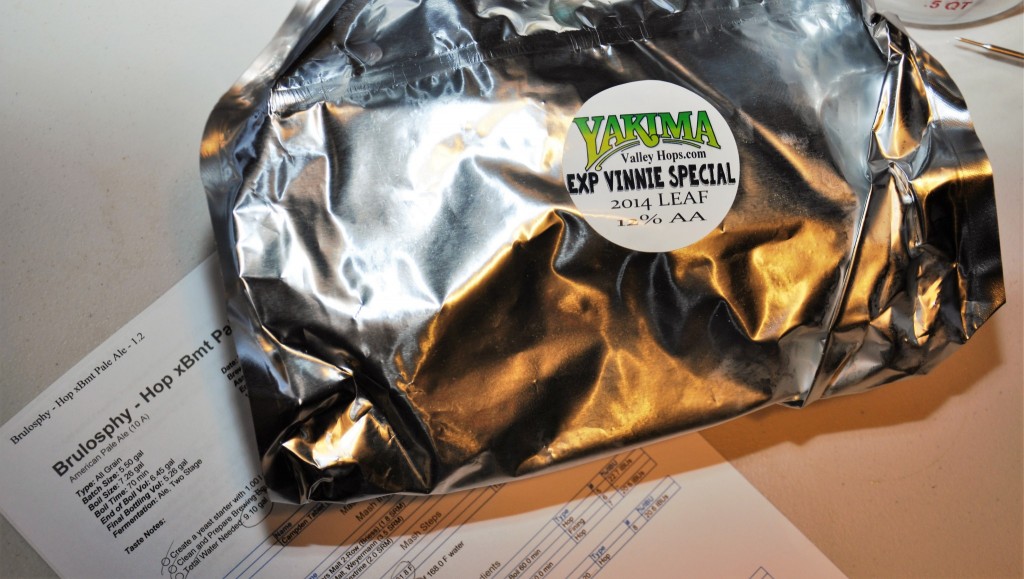
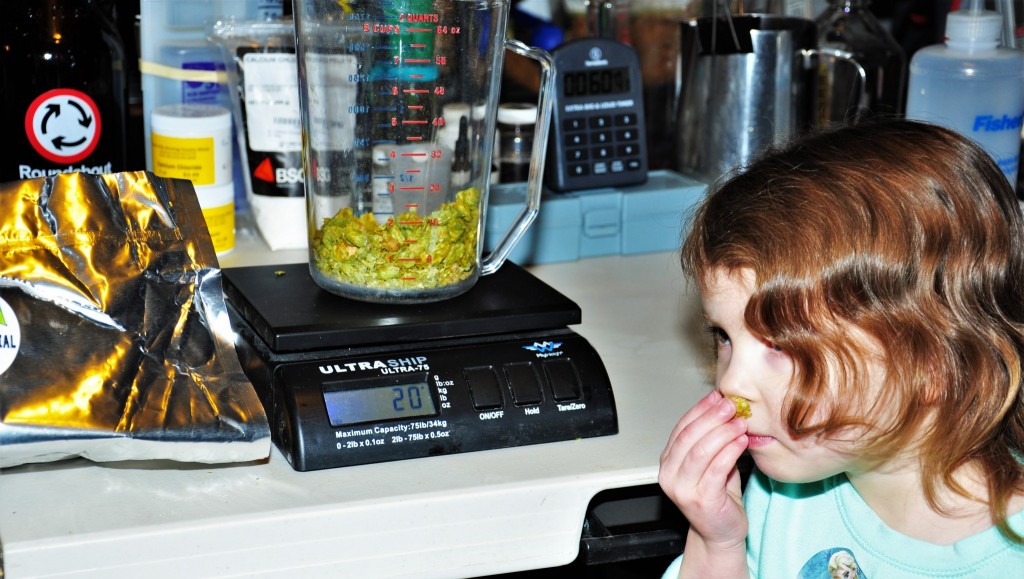
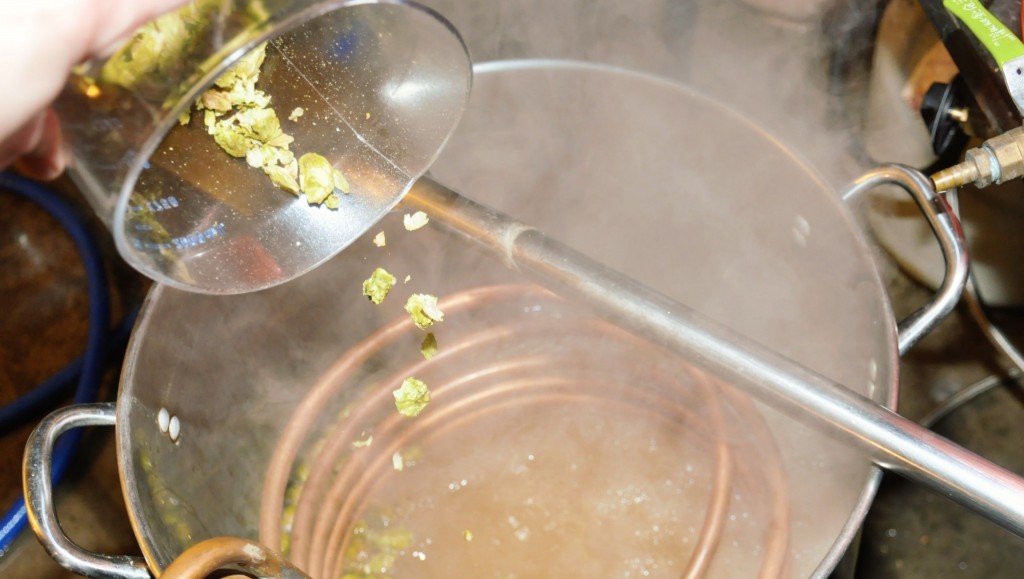
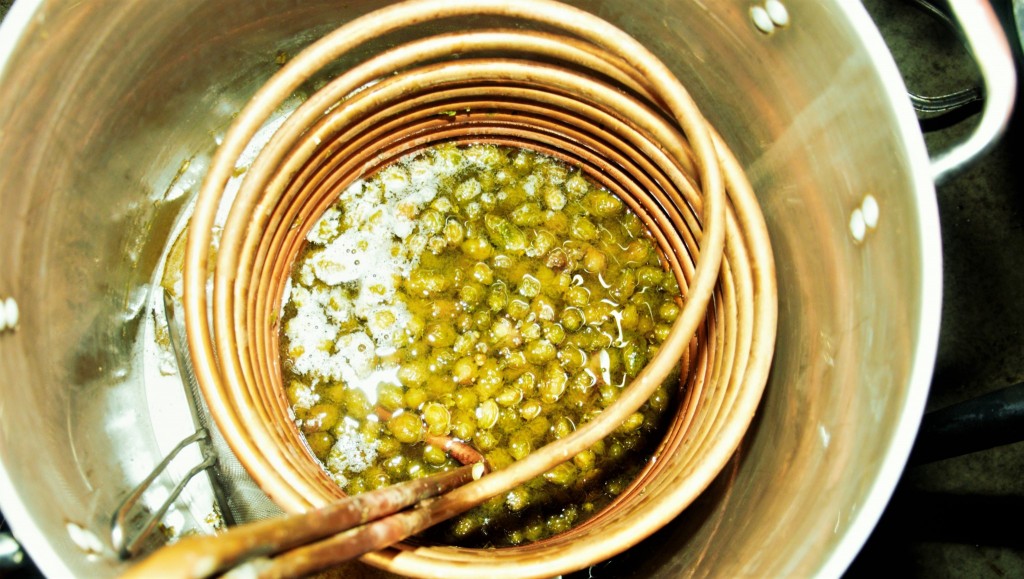
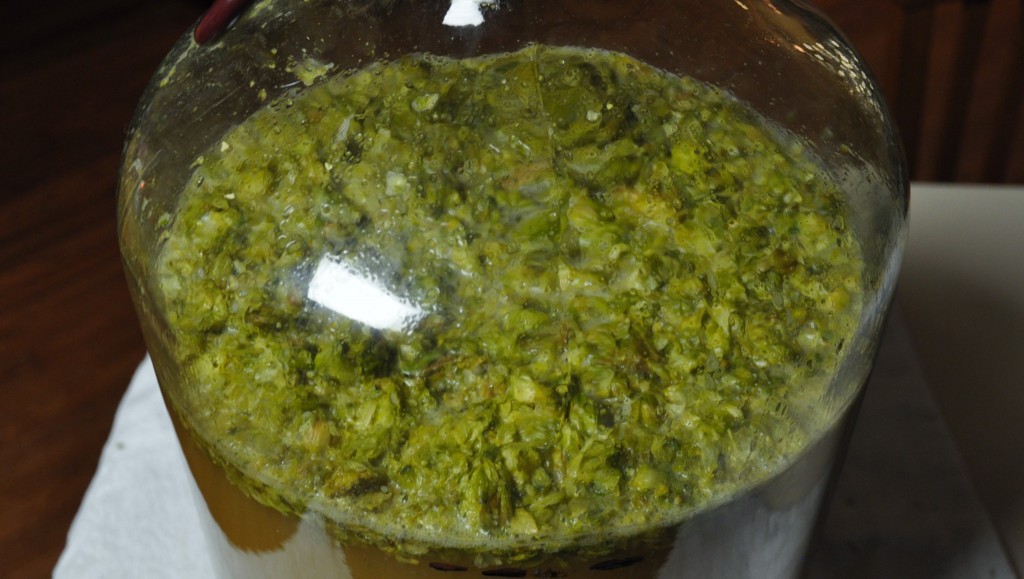
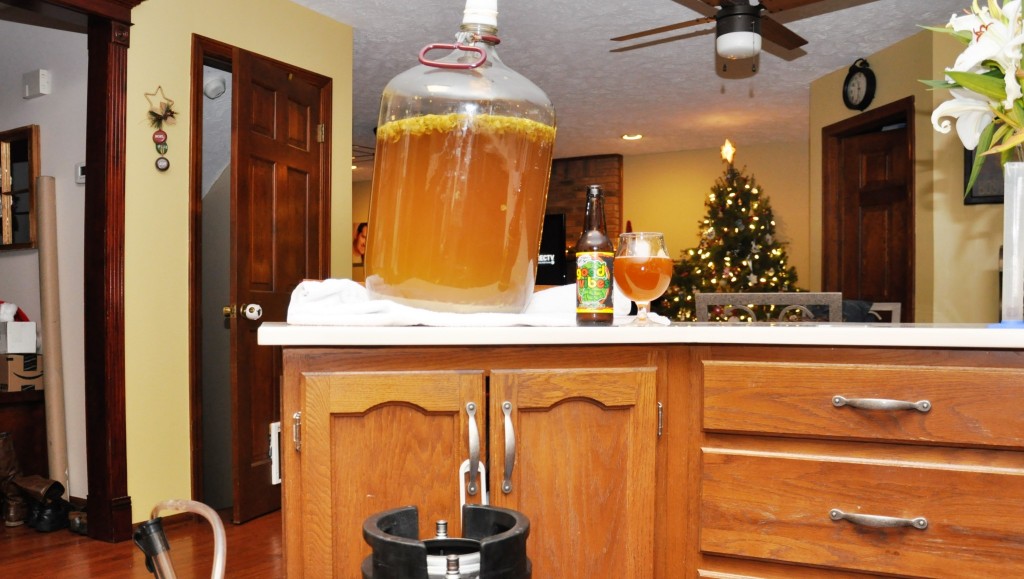
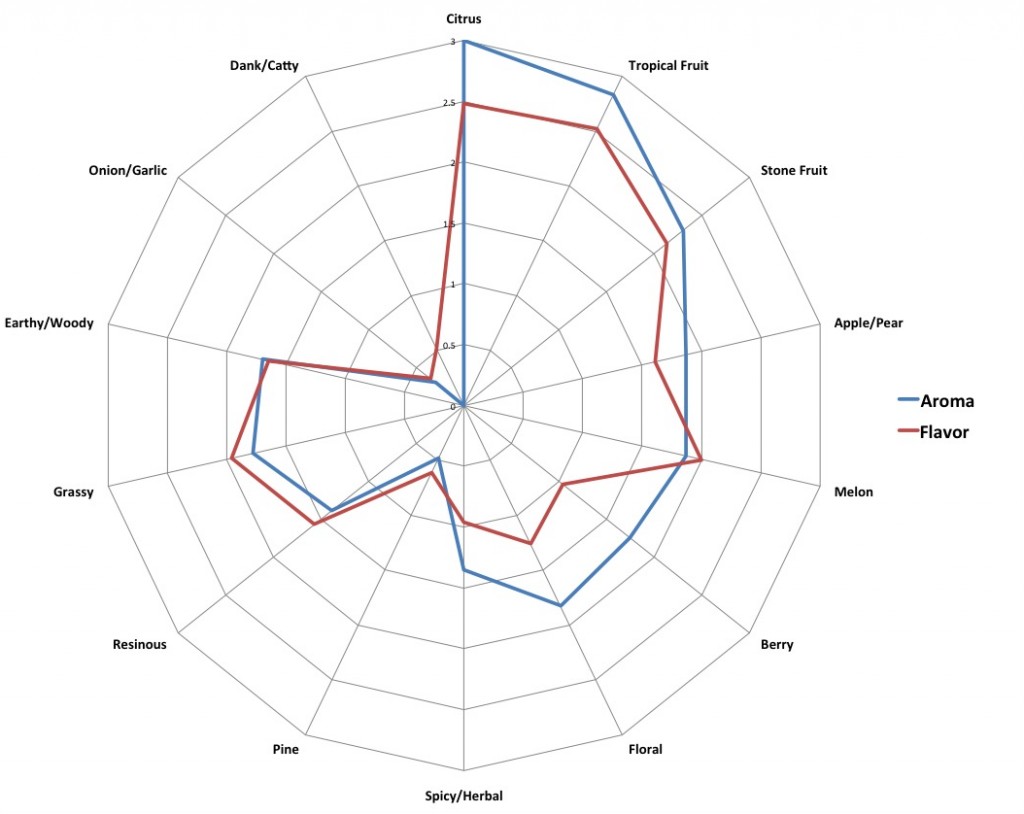
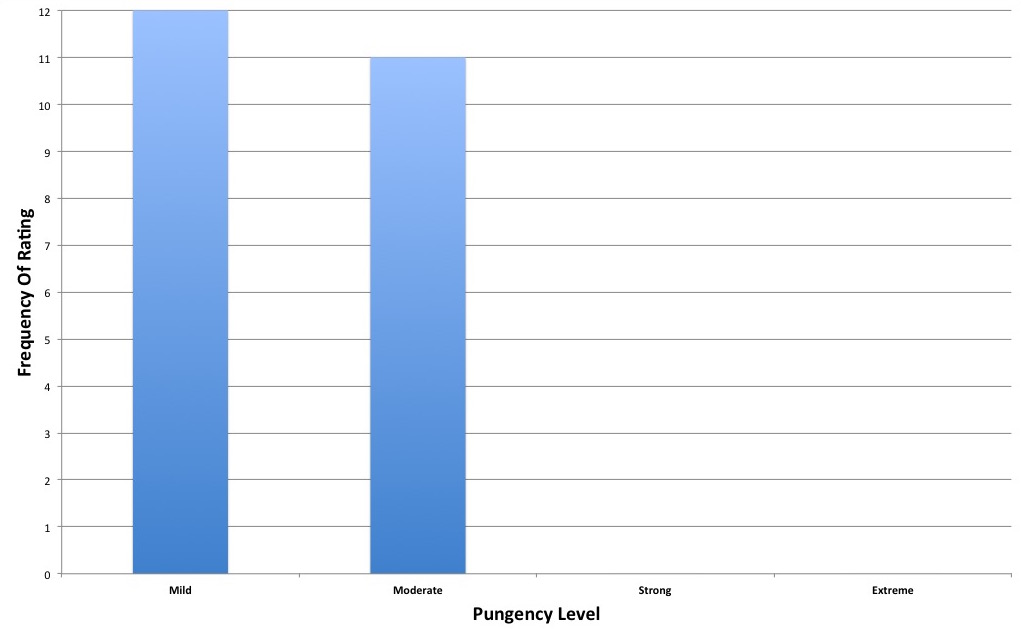
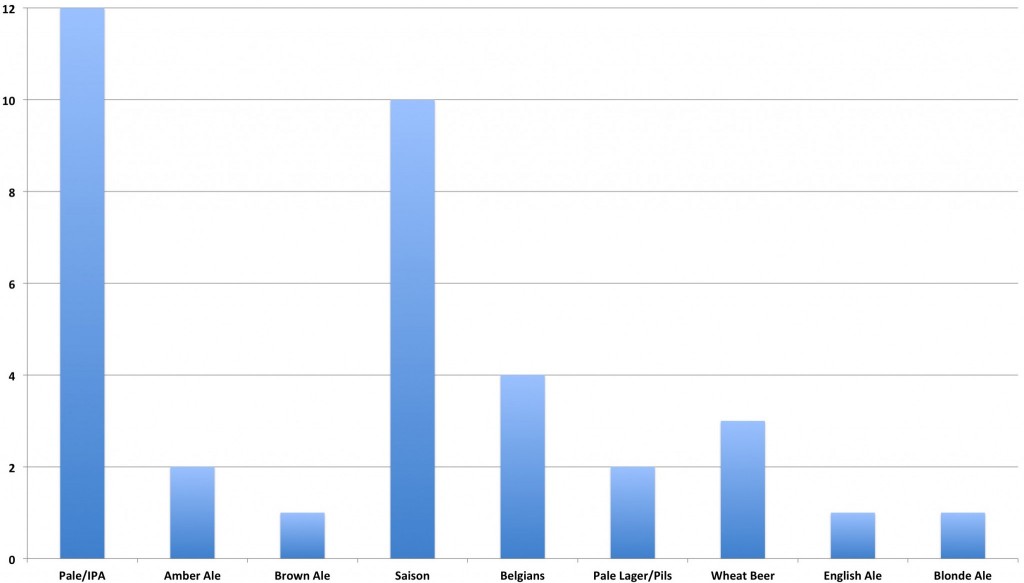
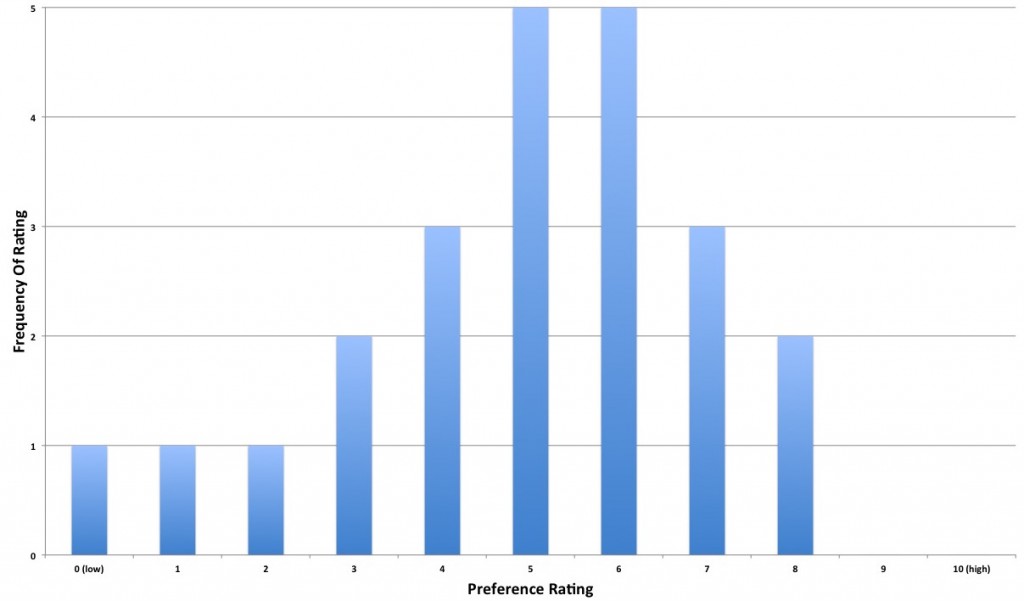











20 thoughts on “The Hop Chronicles | Vinnie Special Experimental (2014) Pale Ale”
Along the same lines as simplifying the grain bill to focus on the hops, have you considered removing the extraneous variable of fining with gelatin? While gelatin fining has been the subject of past experiments (found to be by this blog of no significance), adding this variable to the experiment may bring the focus off of the hops just in the effort to have a clear beer in less time (a cosmetic issue). Thanks for your efforts.
I hate the idea of simplifying the grain bill to begin with and fought it tooth and nail. The version for the Vinnie Hop is very light in malt flavor and in no way “gets in the way” of hops.
If all of us always use finings then that’s the baseline so I don’t see an issue.
I would also like to rerun a Gel vs no Gel hop xBmt. As we often warn – one and maybe even two xBmts does not and should not end the conversation.
Sounds like a great aroma/flavor hop to use with Heady Topper yeast
Vinnie will be pouring at a local beerfest this wknd, I’ll have to pick his brain!!
Please do and report back.
Can do!! Have you tried reaching out to him? He can often be found talking methods, grains etc at the brewery so unless he’s contractually obligated from talking about it I’m sure he’d be happy to pass along some info.
This actually sounds like it would be good in a Pilsner or the like, a little something different from the standard floral/spicy noble varieties you commonly see.
In the right recipe and right hands, perhaps. I’ve had a Mandarina Bravaria Pils that I didn’t think I’d like but it was wonderful.
This was so orangy sweet it may be part of a complimentary hop bill. Might pair well with a magnum for bitterness and Saaz at the end. Just a guess.
That’s great to hear, I just brewed a Pils with Mandarina Monday. Might have to split and try and dry hop with some different hops, any suggestions? I was thinking about doing Polaris for half and more Mandarina for the rest.
Wilbur,
If you feel the floral fragrance and minty note would go with sweet orange… go for it. I personally do not care for the Polaris character but different strokes for different folks.
I was thinking the high oil content would add a lot of hop flavor, any suggestions on other German hops?
Wilbur,
I do not want to be one to stifle creativity and original thought – unless an idea is obsurd – and MB with Polaris certainly is not. It’s a preference thing.
I’m sensitive to the minty and floral notes to the point my wife teases me because I think everything smells of old lady and potpourri. I say f’it. Try it. Tell me I’m wrong.
Personally, I’d do MB with a spicy non minty hop like Sterlin, Lublin, or if you want high oil maybe Styrian Celeia – kind of a blend of the new (BM) with the classic to anchor it.
With the existing THC Pale Ale recipe, and the new single malt one you’re about to switch to, do you vary the weight of hops you add depending on if you’re using pellets vs whole cones? I imagine you’d need a lot more of the cones to try and get a similar hop profile to using pellets.
I adjusted the weight of the hops in accordance with oft prescribed methods – a few were taken into account – to include those recommended by BeerSmith.
With that, I cannot say I’m expert at adjusting for cone hops vs pellets yet, with only a few recipes of doing so to my credit, and thus just did my best.
Well, clearly I need to try this hop for obvious reasons.
I’ve made a couple of single hop beers (APA, Amber ale) with Vinnie’s, and my experiences seem to match yours. I think my best descriptor for the hop is “pleasantly fruity.” There’s nothing particularly intense or over-the-top about it. Bitterness is soft, and the sweet fruit character, which leans more tropical than citrus to my palette, is present but not over-powering.
The APA received rave reviews from my family that prefers non-hoppy beers. The amber is going over well with my hop head friends.
I think I might try a Chinook/Vinnie’s IPA next to try to see how Vinnie’s acts with a little more harsh bitterness to offset some of the fruity sweetness. I can also imagine doing something like a low gravity Maris Otter/Vinnie’s SMASH. It would be a great quaffer for the summer.
I tapped a keg of double IPA featuring this hop tonight. I find it outstanding. I do not like the tropical fruit salad hops like El Dorado, nor the dank hops like CTZ, but prefer the Chinook/Centennial/Cascade/Amarillo types. The Vinnie hops are clearly close to the Centennial type of citrus flavor/aroma. This keg will not last long.
I enjoy it as well. Kind of a less pungent Englishy earthy version of our US citrus fwd hops.
What was the amount of hops you put in at each stage?
I will have to have Marshall repost the THC Pale Ale Hop Xbmt Recipe. It used to be under the “Recipe Section”.